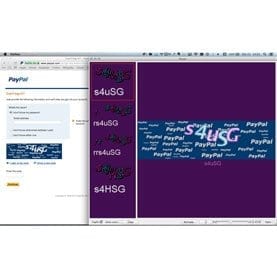
WHEN the first commercially successful steamship traveled the Hudson River in 1807, it didn’t appear to be much of a competitive threat to transoceanic sailing ships.
It was more expensive, less reliable and couldn’t travel very far. Sailors dismissed the idea that steam technology could ever measure up — the vast reach of the Atlantic Ocean surely demanded sails. And so steam power gained its foothold as a “disruptive innovation” in inland waterways, where the ability to move against the wind, or when there was no wind at all, was important.
In 1819, the technology vastly improved, the S.S. Savannah made the first Atlantic crossing powered by steam and sail (in truth, only 80 of the 633-hour voyage was by steam). Sailing ship companies didn’t completely ignore the advancement. They built hybrid ships, adding steam engines to their sailing vessels, but never entered the pure steamship market. Ultimately, they paid the price for this decision. By the early 1900s, with steam able to power a ship across the ocean on its own, and do so faster than the wind, customers migrated to steamships. Every single transoceanic sailing-ship company went out of business.
Traditional colleges are currently on their hybrid voyage across the ocean.
Like steam, online education is a disruptive innovation — one that introduces more convenient and affordable products or services that over time transform sectors. Yet many bricks-and-mortar colleges are making the same mistake as the once-dominant tall ships: they offer online courses but are not changing the existing model. They are not saving students time and money, the essential steps to disruption. And though their approach makes sense in the short term, it leaves them vulnerable as students gravitate toward less expensive colleges.
For-profit universities latched on early to online learning, rough as it was in the 1990s. The target, as with all disruptive innovations, was customers who wouldn’t otherwise consume their product — in this case, working adults for whom traditional higher education was inconvenient. In theory, for-profit companies should have shaken up the higher education landscape. But federal financial aid seems to have gummed up the disruption: the easy revenue has encouraged some schools to indiscriminately enroll, often at the expense of quality, and has discouraged cost reduction.
Still, the theory predicts that, be it steam or online education, existing consumers will ultimately adopt the disruption, and a host of struggling colleges and universities — the bottom 25 percent of every tier, we predict — will disappear or merge in the next 10 to 15 years. Already traditional universities are showing the strains of a broken business model, reflecting demand and pricing pressures previously unheard-of in higher education. One example: Needing a cash infusion, Thunderbird School of Global Management in July announced a merger with Laureate Education Inc., an online pioneer.
Go deeper with Bing News on:
Online Education
- UNF partners with Green Flower, introduces 2 new cannabis education certificates
The University of North Florida has expanded its online cannabis education classes in partnership with Green Flower, a leading provider of cannabis education, with the additions of the Cannabis ...
- PU centre for distance, online education holds convocation
The Centre for Distance and Online Education (CDOE, formerly USOL), Panjab University, organised its scintillating annual events — 8th convocation and 48th prize giving function —in its auditorium ...
- Discover the Possibilities of Online Education at Utah Tech University
Discover the still expanding world of online education at Utah Tech University. Learning meets flexibility and innovation: a wide array of ...
- University of Northern Iowa to add online MBA program, make changes to the curriculum
The University of Northern Iowa (UNI) is launching an online program that will offer students a chance to earn an MBA. Here's how it works.
- How University of Tennessee online learning is evolving, and 5 more pieces of news to know
The University of Tennessee at Knoxville has a lot on its plate before graduation in May, including a new partnership with an out-of-state institution. UT Knoxville has entered into a new partnership ...
Go deeper with Google Headlines on:
Online Education
[google_news title=”” keyword=”Online Education” num_posts=”5″ blurb_length=”0″ show_thumb=”left”]
Go deeper with Bing News on:
Education online
- UNF partners with Green Flower, introduces 2 new cannabis education certificates
The University of North Florida has expanded its online cannabis education classes in partnership with Green Flower, a leading provider of cannabis education, with the additions of the Cannabis ...
- QU Opens Undergraduate Admissions Online For Fall 2024 Semester
The Admission Department at Qatar University (QU) announced Saturday that it will embark on receiving applications for undergraduate ...
- Lawmakers send MAEP education funding formula rewrite to governor
Under the first year of the new formula, K-12 education is supposed to receive an additional $230 million, about $50 million less than MAEP would have provided if fully funded.
- Colleges don't have to refund tuition because COVID moved classes online, Texas Supreme Court rules
A former SMU grad student sued the school on behalf of all students who paid tuition for the spring 2020 semester, only for COVID to force schools to move classes online.
- Google Launches AI Education Course Along With $75 Million in Grants
A Google program will provide AI skills training and funds to underserved communities, schools and small businesses.
Go deeper with Google Headlines on:
Education online
[google_news title=”” keyword=”education online” num_posts=”5″ blurb_length=”0″ show_thumb=”left”]









